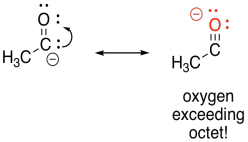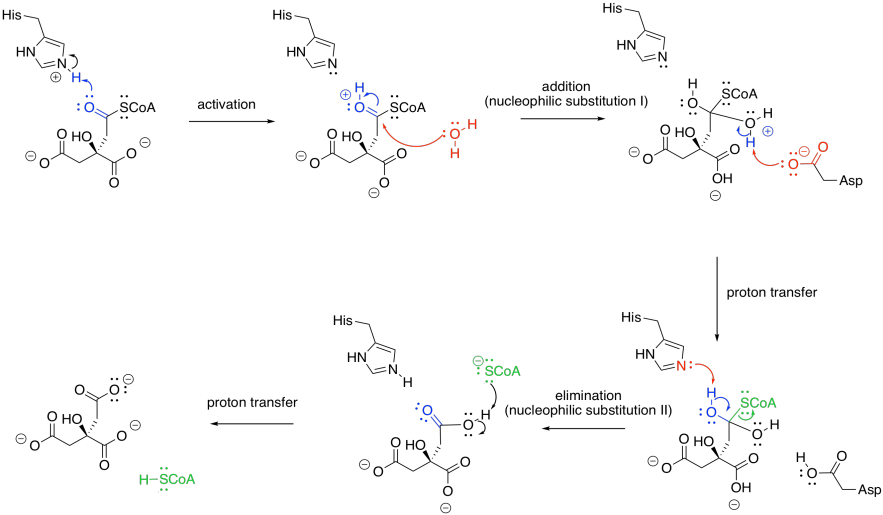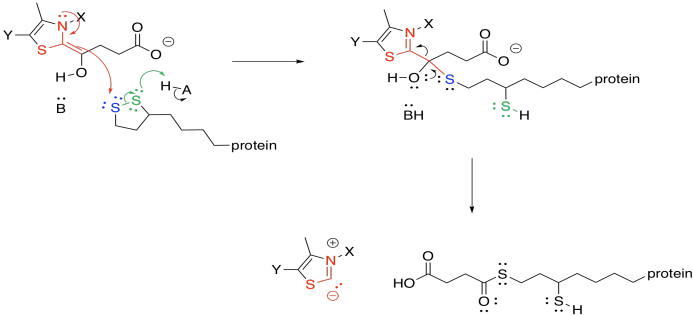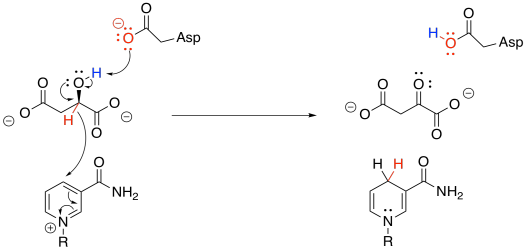
Reactivity in Chemistry
Mechanisms of the Tricarboxylic Acid Cycle
TC4. Solutions for Selected Problems
Problem TC1.1.
Steps 3 and 4 (isocitrate to alpha-ketoglutarate and alpha-ketoglutarate to succinyl coenzyme A).
Problem TC1.2.
Step 5 (succinyl coenzyme A to succinate).
Problem TC1.3.
Steps 3 (isocitrate to alpha-ketoglutarate; NADH), 4 (alpha-ketoglutarate to succinyl coenzyme A; NADH), 6 (succinate to malate; FADH2), and 8 (malate to oxaloacetate; NADH).
Problem TC2.1.

Problem TC2.2.

Problem TC2.3.

Problem TC2.4.
Problem TC2.5.
Problem TC3.1.

Problem TC3.2.

Problem TC3.3.

Problem TC3.4.
The anion that results from deprotonation of tyrosine is resonance-stabilised, but the anion that results from deprotonation of serine is not. The tyrosine anion is more stable compared to the serine anion and therefore the tyrosine anion forms more readily.

Problem TC3.5.

Problem TC3.6.

Problem TC3.7.

Problem TC3.8.

This site was written by Chris P. Schaller, Ph.D., College of Saint Benedict / Saint John's University (retired) with other authors as noted on individual pages. It is freely available for educational use.

Structure & Reactivity in Organic,
Biological and Inorganic Chemistry by
Chris Schaller
is licensed under a
Creative Commons Attribution-NonCommercial 3.0 Unported License.
Send corrections to cschaller@csbsju.edu
This material is based upon work supported by the National Science Foundation under Grant No. 1043566.
Any opinions, findings, and conclusions or recommendations expressed in this material are those of the author(s) and do not necessarily reflect the views of the National Science Foundation.
Navigation: